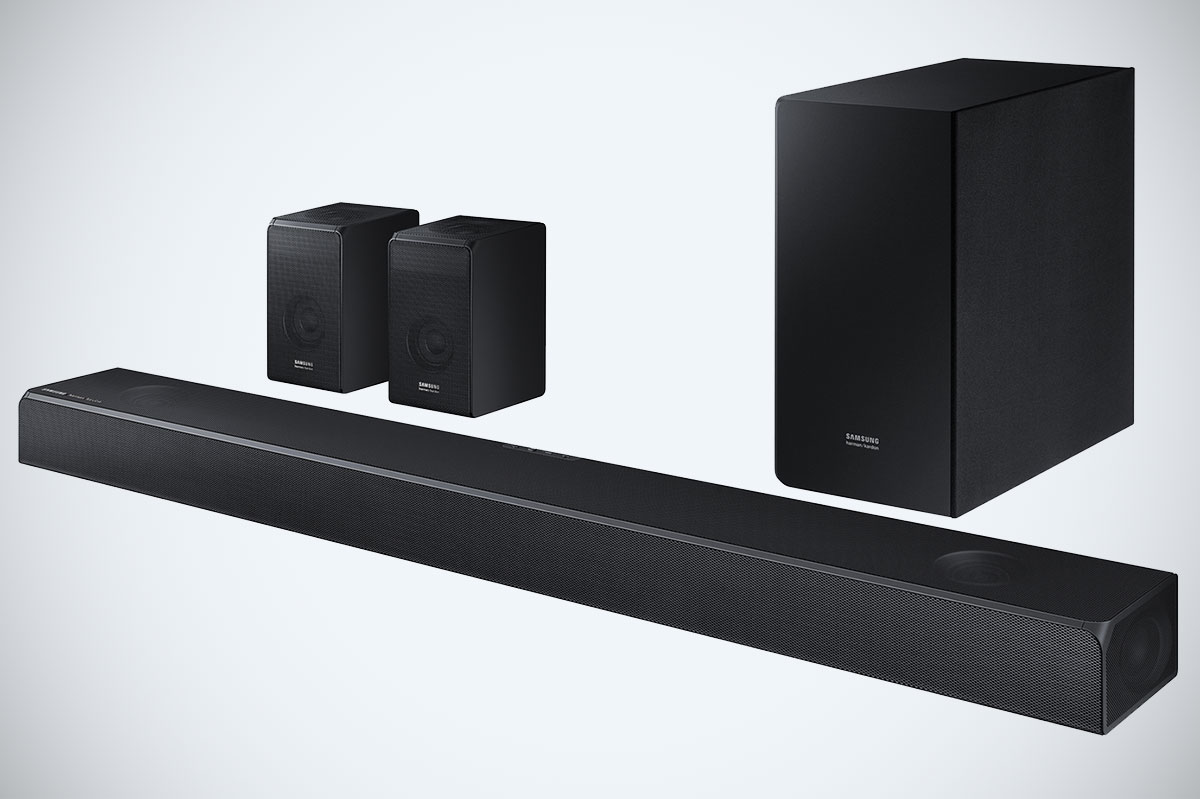
You may not remember, but in 2017, Samsung purchased powerhouse audio brand Harman, which not only owns popular consumer brand Harman Kardon, but a number of other companies including JBL, Lexicon, and AKG. At the time, this seemed like an unusual purchase for the Korean company, but now it’s starting to make much more sense, as Samsung is launching a pair of co-branded soundbars in the HW-N950 and HW-N850.
If you’re wondering why you might want to care about these particular soundbars, we give you two words: Dolby Atmos. We’ll give you one more as well: DTS:X. Yes, the same object-based surround sound that adds a height dimension in theaters and more complicated home theater setups is available with the convenience of a soundbar, and while DTS:X isn’t as popular, it’s still nice to have both. Samsung isn’t the first brand to do this, but with 7.1.4-channel and 5.1.2-channel configurations in the HW-N950 and HW-N850 respectively, these seem like the real deal.
In the case of the HW-N950, Samsung says this is currently the highest channel count available in a soundbar, with a main unit with four speakers and two wireless surround sound speakers as well as a wireless subwoofer. The HW-850 opts for a main unit and woofer for its 5.1.2-channel configuration. As a symbol of how important both companies see this collaboration being, both Samsung and Harman Kardon branding will be on the speakers.
“Our collaboration with Harman Kardon — an audio leader for 65 years — is a major leap forward as we continue to push the boundaries of premium sound and design for our consumers,” Senior Vice President of Visual Display Business at Samsung Electronics Jongsuk Chu said in a statement. “Samsung’s market-leading display technology and design paired with premium sound quality of Harman Kardon products is a winning combination for consumers.”
Both the HW-N950 and the HW-N850 will be available beginning August 20, though no pricing information is available at the time of this writing. In the meantime, take a look at our soundbar buying guide to make sure you’re buying what you need, and if you’re curious what the competition has to offer, check out our list of the best soundbars you can buy.
Editors' Recommendations
- Samsung launches its flagship Dolby Atmos soundbar with discounted prices
- TCL goes all-in on Dolby Atmos with its first 7.1.4-channel soundbar
- Samsung’s flagship HW-Q990D Dolby Atmos soundbar gets Roon support
- You Asked: Dolby Atmos and EDID, minimalist soundbars, and HDMI 2.1
- Bose’s new flagship Dolby Atmos soundbar brings AI smarts to the dialogue problem


